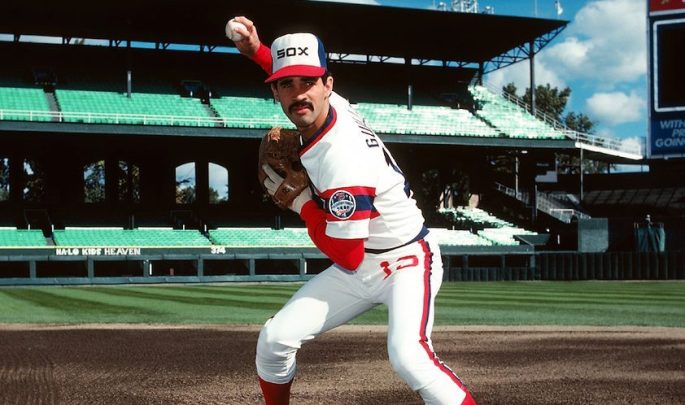Ho-lee Cow: On a first-pitch opportunity to stab the Red Sox in the heart, Carlton Fisk drove the knife in deep. (YouTube)
1959
The season opener to a memorable, pennant-winning year started in Detroit where Billy Pierce faced Jim Bunning. The Sox blew a 7-4 lead when the Tigers got three runs in the eighth inning, and matters weren’t decided until the 14th. That’s when Nellie Fox, who hit home runs as often as he struck out, blasted a two-run shot to give the Sox the 9-7 win. Fox would go 5-for-7 and knock in three runs that afternoon, despite freezing temperatures.
1961
White Sox outfielder “Jungle” Jim Rivera was always good for the unexpected. Right before the Sox played in Washington D.C. to open the season, President John Kennedy threw out the first ball. Rivera came up with it and was escorted to the President’s box, where both Kennedy and Vice President Lyndon Johnson signed the ball.
After Rivera looked at it he said to the President, “You’ll have to do better than that, John. This is a scribble I can hardly read!” So Kennedy, in block letters, spelled out his name on the baseball. Oh … the Sox went on to win the game, 4-3, getting single runs in the seventh and eighth innings. It was the first game the expansion Washington Senators ever played.
1968
Social unrest on the West Side of Chicago after the assassination of Dr. Martin Luther King held the Opening Day crowd at Comiskey Park to fewer than 8,000. The White Sox got shut out by Cleveland’s Sonny Siebert, 9-0. It was the first of a franchise-record 10 straight losses to open the season. Coupled with the five straight losses to close out 1967, the Sox would end up dropping 15 in a row.
1981
If you had written the script and pitched it to Hollywood, it would have refused it on the grounds of corniness — but reality is sometimes stranger than fiction. Carlton Fisk, native son of New England, returned to Boston on Opening Day mere weeks after leaving the Red Sox for the White Sox. Fisk was declared a free agent after the Red Sox mailed him his contract past the legal deadline, and he left. With a new team, in a new uniform, Fisk immediately began making Boston pay as he ripped a first-pitch, three-run home run in the eighth inning off of Bob Stanley to put the White Sox ahead 3-2 in a game they’d win 5-3.











